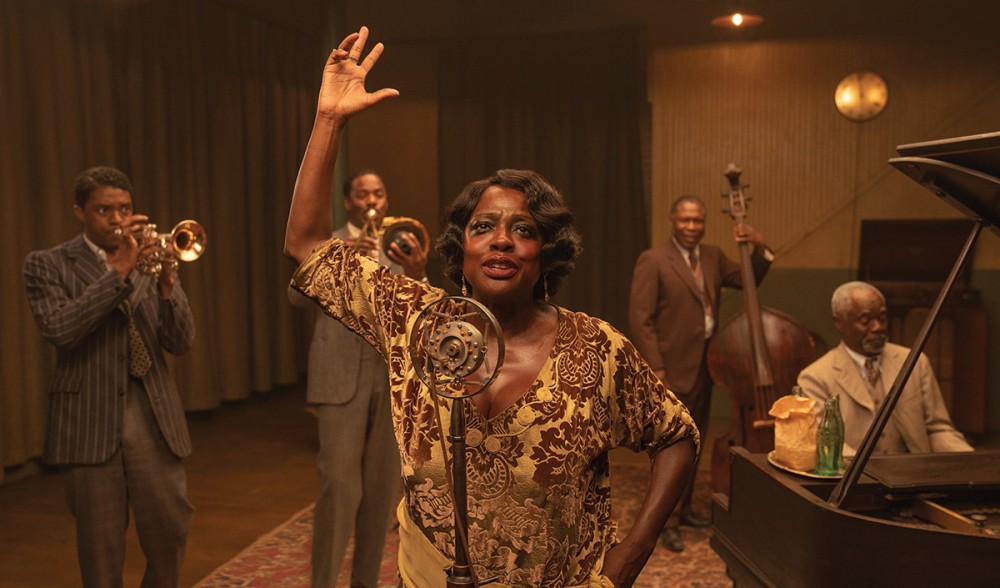The dilemma of Black art in a White-supremacist culture
Set 40 years apart, Ma Rainey’s Black Bottom and One Night in Miami ask similar questions.

“They don’t care nothing about me,” says blues singer Ma Rainey (Viola Davis) in Ma Rainey’s Black Bottom. “All they want is my voice. Well, I done learned that, and they’re going to treat me like I want to be treated no matter how much it hurts them.” She is explaining to her bandleader why she stopped their recording session when her White manager forgot to bring her the Coca-Cola she requested.
In the 1920s, Rainey became one of the first Black women to achieve major fame with White audiences as the “mother of the blues.” In the film, an adaptation of the play by August Wilson, her manager treats her like a spoiled child or capricious tyrant, fluttering about trying to appease her and to keep the studio executive from “putting her in her place.” But Ma knows there is really no difference between the manager’s sycophantic gestures and the executive’s open racism—neither of them cares about her artistry, her inner life, or her experiences. They will drop her the minute she stops making them money.
The film, directed by George C. Wolfe and released by Netflix, is a poignant, masterful exploration of the dilemma of Black art in Jim and Jane Crow America. Ma knows who she is and refuses to compromise. She plays a style of music that made her famous in the Black South, and she won’t pander. But she is challenged by other band members who have a different understanding of the role of music in American racial dynamics. Young, talented trumpeter Levee (Chadwick Boseman, in his last film before his death) thinks he can make music that will catapult him to a new level of fame and popularity with White and northern Black audiences, without losing his identity and artistic freedom.




